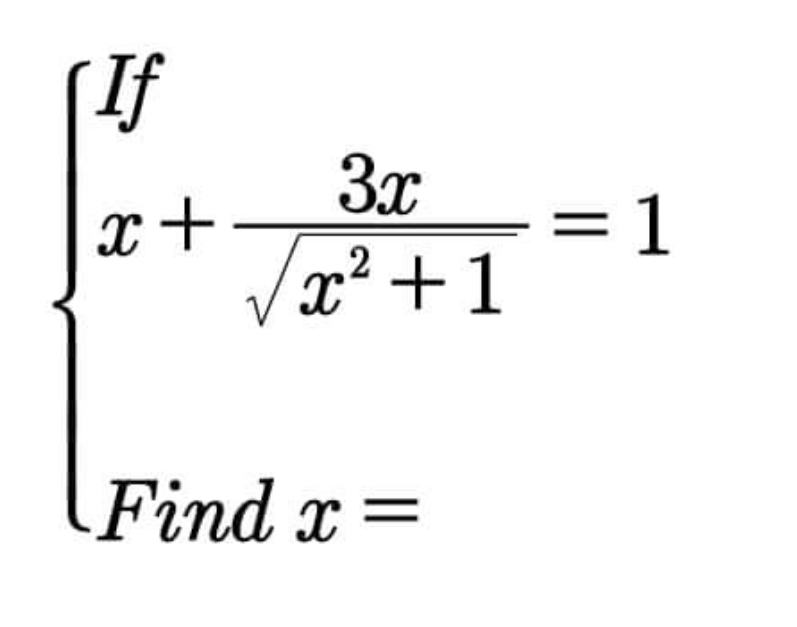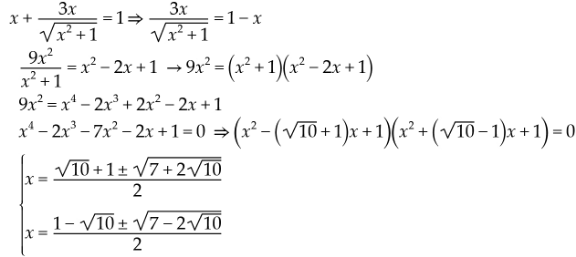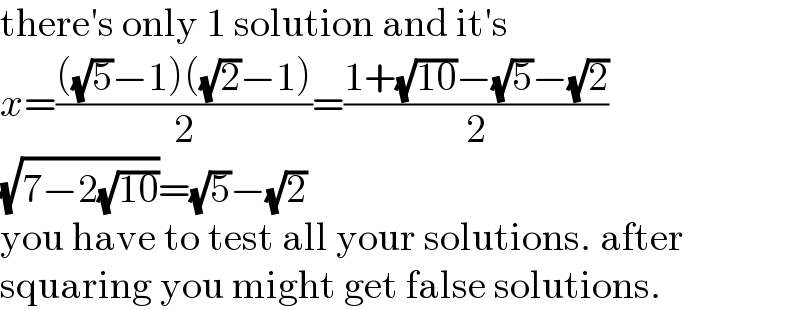Question Number 164191 by mathlove last updated on 15/Jan/22

Answered by cortano1 last updated on 15/Jan/22

Commented by MJS_new last updated on 15/Jan/22

$$\mathrm{there}'\mathrm{s}\:\mathrm{only}\:\mathrm{1}\:\mathrm{solution}\:\mathrm{and}\:\mathrm{it}'\mathrm{s} \\ $$$${x}=\frac{\left(\sqrt{\mathrm{5}}−\mathrm{1}\right)\left(\sqrt{\mathrm{2}}−\mathrm{1}\right)}{\mathrm{2}}=\frac{\mathrm{1}+\sqrt{\mathrm{10}}−\sqrt{\mathrm{5}}−\sqrt{\mathrm{2}}}{\mathrm{2}} \\ $$$$\sqrt{\mathrm{7}−\mathrm{2}\sqrt{\mathrm{10}}}=\sqrt{\mathrm{5}}−\sqrt{\mathrm{2}} \\ $$$$\mathrm{you}\:\mathrm{have}\:\mathrm{to}\:\mathrm{test}\:\mathrm{all}\:\mathrm{your}\:\mathrm{solutions}.\:\mathrm{after} \\ $$$$\mathrm{squaring}\:\mathrm{you}\:\mathrm{might}\:\mathrm{get}\:\mathrm{false}\:\mathrm{solutions}. \\ $$
